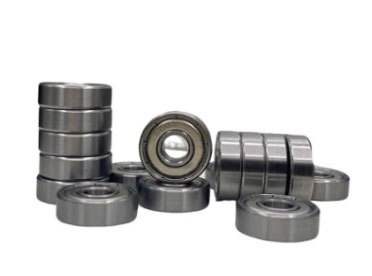Home / News / Understanding CNC Bearing Clearance: Its Importance and Impact on Machine Performance and Reliabilit
Understanding CNC Bearing Clearance: Its Importance and Impact on Machine Performance and Reliabilit
Introduction
CNC (Computer Numerical Control) machines are at the core of modern manufacturing processes, providing high levels of precision, accuracy, and efficiency. Bearings play a vital role in the performance and reliability of these machines, and bearing clearance is an essential factor to consider when selecting and maintaining bearings. In this article, we will discuss the importance of bearing clearance in CNC machines, its impact on machine performance, and the factors that influence bearing clearance selection.

What is Bearing Clearance?
Bearing clearance, also known as internal clearance or radial internal clearance, is the total distance one bearing ring can be displaced relative to the other in the radial direction. In simpler terms, it is the amount of looseness or free play within the bearing. The appropriate bearing clearance allows for thermal expansion, reduces friction, and ensures proper load distribution within the bearing.
Importance of Bearing Clearance in CNC Machines
The bearing clearance has a direct impact on several aspects of CNC machine performance:
Temperature stability: Proper bearing clearance allows for thermal expansion during operation, preventing excessive friction and heat generation that could lead to bearing failure.
Load distribution: Adequate bearing clearance ensures even load distribution across the rolling elements, reducing stress on the bearing and extending its service life.
Vibration and noise: Correct bearing clearance helps to minimize vibration and noise levels in CNC machines, enhancing the overall machining process's quality and accuracy.
Lubrication: Appropriate bearing clearance allows for proper lubrication distribution within the bearing, reducing friction and wear.
Factors Influencing Bearing Clearance Selection
Several factors should be considered when selecting bearing clearance for CNC machines:
Operating conditions: The operating temperature, speed, and load of the CNC machine directly impact bearing clearance selection. Higher operating temperatures may require larger clearances to accommodate thermal expansion, while high-speed applications may require tighter clearances to ensure proper load distribution.
Bearing type: Different bearing types, such as ball bearings, roller bearings, or hybrid bearings, may have specific clearance requirements depending on their design and intended use.
Fit and mounting: The fit between the bearing and its housing or shaft can affect bearing clearance. Interference fits can reduce the bearing's internal clearance, while loose fits may increase it.
Preloading: In some CNC applications, bearings are preloaded to increase rigidity and load capacity. Preloading can reduce the bearing's internal clearance, and this factor should be considered when selecting bearing clearance.
Adjusting Bearing Clearance in CNC Machines
In some cases, bearing clearance may need to be adjusted during installation or maintenance:
Adjustable bearings: Certain bearing types, such as tapered roller bearings or angular contact ball bearings, have adjustable clearances. The clearance can be set according to the manufacturer's guidelines to ensure optimal performance.
Shims or spacers: In some applications, shims or spacers can be used to adjust bearing clearance. These components should be selected and installed with care to ensure proper bearing performance.
Replacement bearings: If the existing bearing clearance is found to be unsuitable for the CNC machine's operating conditions, the bearing may need to be replaced with one that has the appropriate clearance.
Conclusion
Understanding the importance of bearing clearance in CNC machines is crucial for ensuring optimal performance, reliability, and longevity. By considering the factors that influence bearing clearance selection and making necessary adjustments, manufacturers can optimize their CNC machines' performance, reduce maintenance costs, and improve product quality. Proper bearing clearance selection and maintenance are critical factors in maximizing the efficiency and productivity of advanced manufacturing processes.
- Previous: CNC Bearing Installation: Best Practices for Ensuring Optimal Performance and Reliability
- Next: CNC Bearing Life Expectancy: Factors Affecting Longevity and Strategies for Maximizing Service Life













